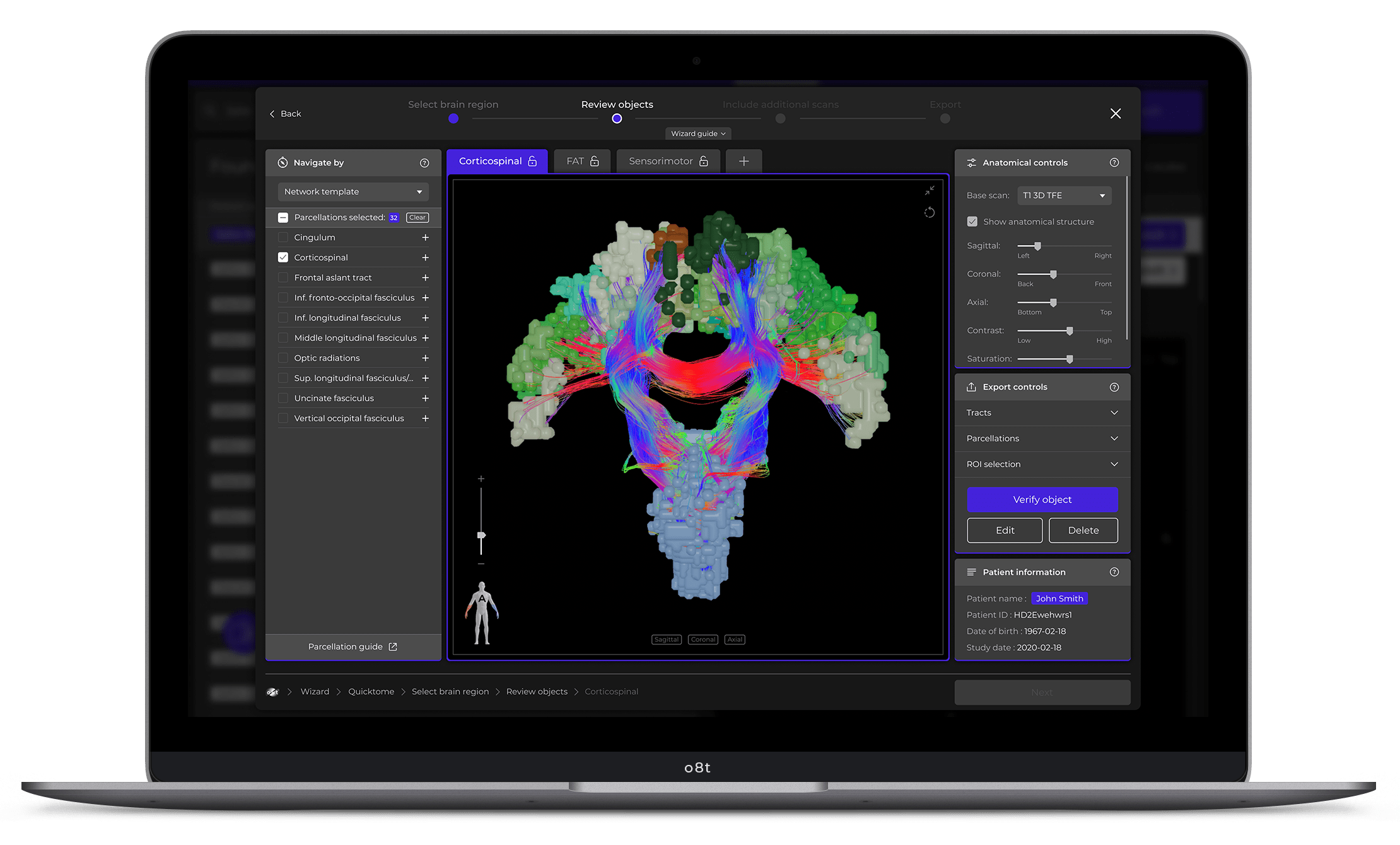View Larger Image

An example of how the brain-imaging technology looks on a computer screen.
UAMS is First in State to Offer Groundbreaking Brain-Mapping Technology
| LITTLE ROCK — The University of Arkansas for Medical Sciences (UAMS) is the first hospital in Arkansas to offer Omniscient Neurotechnology’s Quicktome, an FDA-cleared platform that allows surgeons to visualize a patient’s unique brain networks before life-changing surgery.
A breakthrough in preoperative imaging, Quicktome uses sophisticated algorithms to analyze millions of data points and build a brain map – personalized to each patient — from a standard, noninvasive MRI scan. The maps, which doctors can view on their computers, offer a level of anatomical detail typically not available in a clinical setting, allowing surgeons to incorporate advanced brain network data into neurosurgical planning.
Brain networks are responsible for everything from language to movement to thought, and the maps inform surgical decision-making with the goal of protecting and preserving brain function.
“Quicktome has become invaluable in my pre-surgical planning and in advising patients regarding the potential consequences of brain tumor surgery,” said John Day, M.D., who chairs the UAMS College of Medicine Department of Neurosurgery. “With its clear network visualizations, I can better develop an informed surgical plan that helps achieve the best functional outcome by allowing avoidance of any functionally critical nervous tissue that is present within brain tumor tissue. Prior to the availability of this technology, we were unable to determine if any functional nervous tissue was present in portions of diseased nervous tissue that we would have otherwise removed and caused a new neurologic problem.”
Previous imaging solutions helped neurosurgeons avoid brain areas associated with major disability, such as paralysis and loss of speech, but many patients still emerged from surgery with cognitive, emotional and behavioral complications. Quicktome is the first platform that allows neurosurgeons to map the brain’s cognitive and emotional regulation networks.
UAMS joins a growing network of leading medical centers across the United States that have integrated the brain-mapping technology into their surgery centers.
“From community hospitals to academic institutions such as UAMS, we are working toward making this technology broadly accessible to surgeons to ultimately improve the gold standard for patient outcomes,” said Stephen Scheeler, CEO of Omniscient Neurotechnology. “We’re proud to be able to offer the benefits of Quicktome to neurosurgery patients at UAMS.”
UAMS is the state’s only health sciences university, with colleges of Medicine, Nursing, Pharmacy, Health Professions and Public Health; a graduate school; a hospital; a main campus in Little Rock; a Northwest Arkansas regional campus in Fayetteville; a statewide network of regional campuses; and eight institutes: the Winthrop P. Rockefeller Cancer Institute, Jackson T. Stephens Spine & Neurosciences Institute, Harvey & Bernice Jones Eye Institute, Psychiatric Research Institute, Donald W. Reynolds Institute on Aging, Translational Research Institute, Institute for Digital Health & Innovation and the Institute for Community Health Innovation. UAMS includes UAMS Health, a statewide health system that encompasses all of UAMS’ clinical enterprise. UAMS is the only adult Level 1 trauma center in the state. UAMS has 3,485 students, 915 medical residents and fellows, and seven dental residents. It is the state’s largest public employer with more than 11,000 employees, including 1,200 physicians who provide care to patients at UAMS, its regional campuses, Arkansas Children’s, the VA Medical Center and Baptist Health. Visit www.uams.edu or uamshealth.com. Find us on Facebook, X (formerly Twitter), YouTube or Instagram.
###